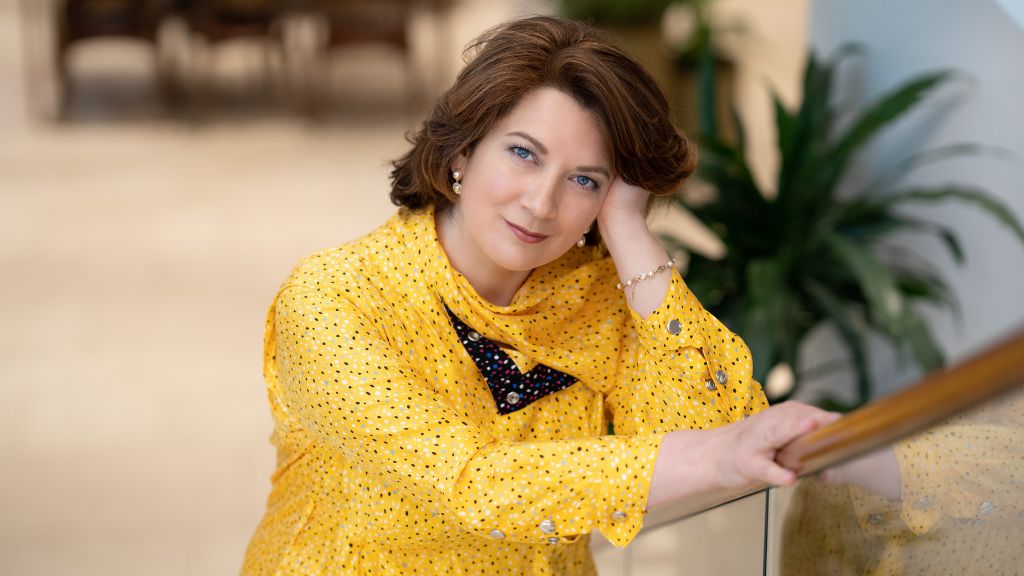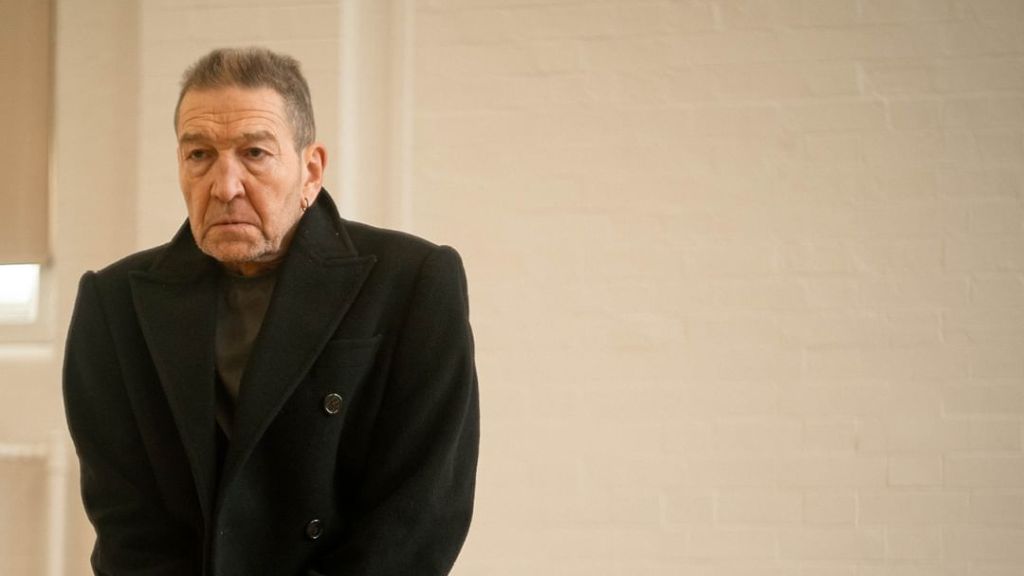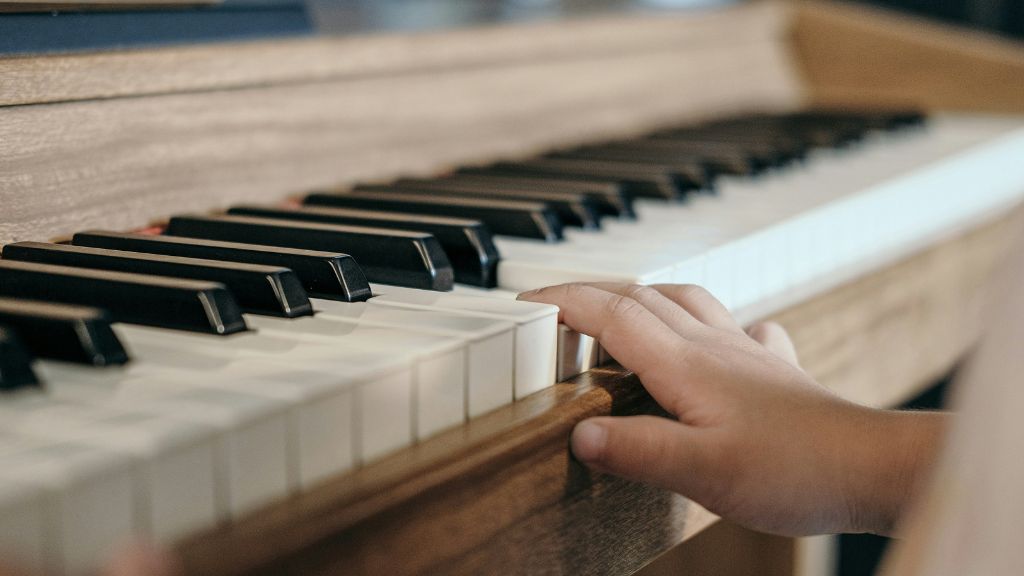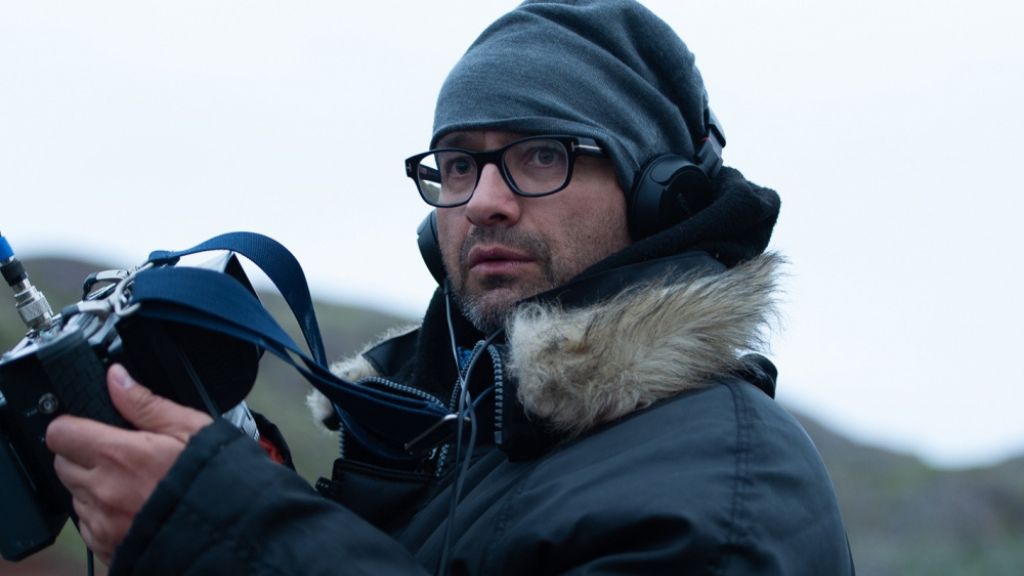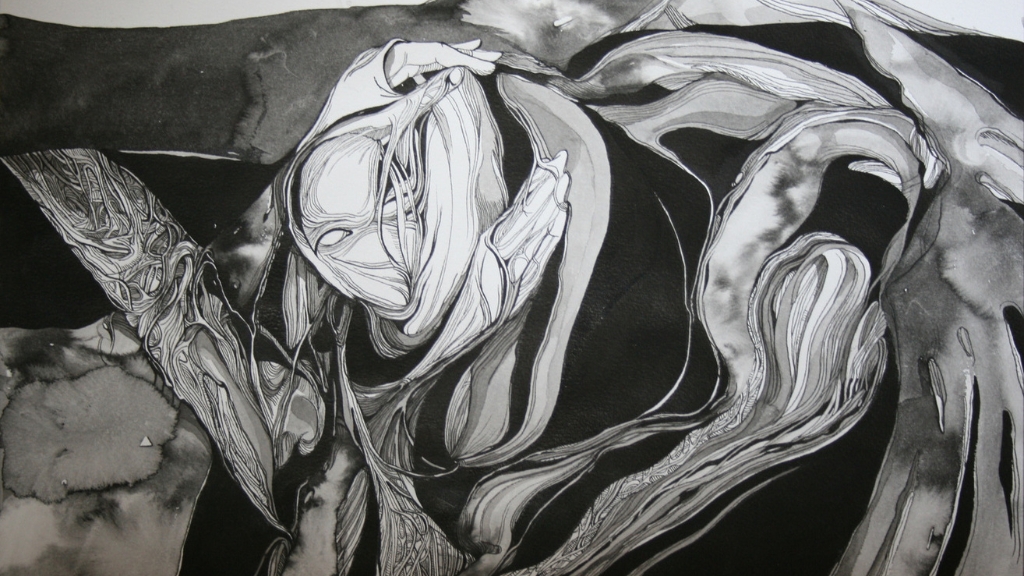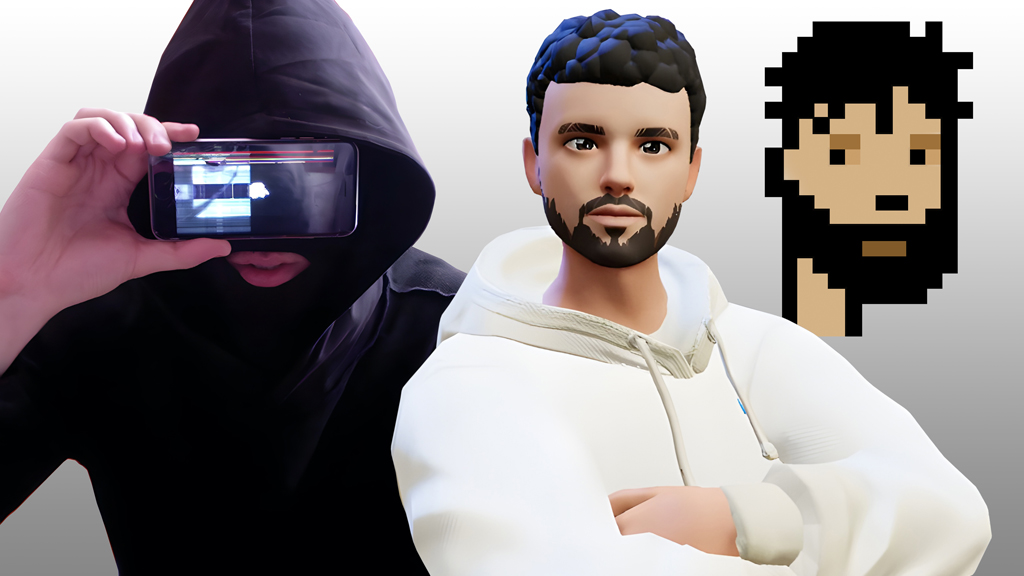
Spy Games, European Biennials and Digital Art: interview with Kirill Rave
Contemporary art is becoming more and more mobile today: canvases and paints have been replaced by tablets and laptops, biennials are held not only in ancient museums, but also in the digital space. To understand how a digital artist works, what excites them and how they sees their future, a personal conversation with a representative of the profession definitely can help us. Afisha.London magazine and art curator Alisa Lisovskaia talk with painter Kirill Rave about artist’s way, mixed media and interconnectedness of art, science and religion.
How do you define yourself today as an artist with such an impressive experience in art?
‘Kirill Rave’ has been my Internet nickname since the early 2000s, when everyone hid under fake names and could do and write whatever they wanted — complete anarchy. You could call it a time of testing the ethics of the new digital reality. I quickly accepted the new rules of self-control and began to educate myself. Now nothing has changed ideologically, I am still looking for new tools and ways to develop my ghost images. They are gradually materializing to create a personal reality at the intersection of gadget perfection and constant failures. In this I use the skills I acquired in classical schools of fine art and through architectural education. I design and implement complex and interesting projects between the material and virtual worlds. My joint project Broken Composers (Kirill Rave & Rebёnok) complements each exhibit with musical experiments and visual performances for full immersion into the idea. In 2019, I even patented my own laser projection method (2019, RU 2 705 182 C1).
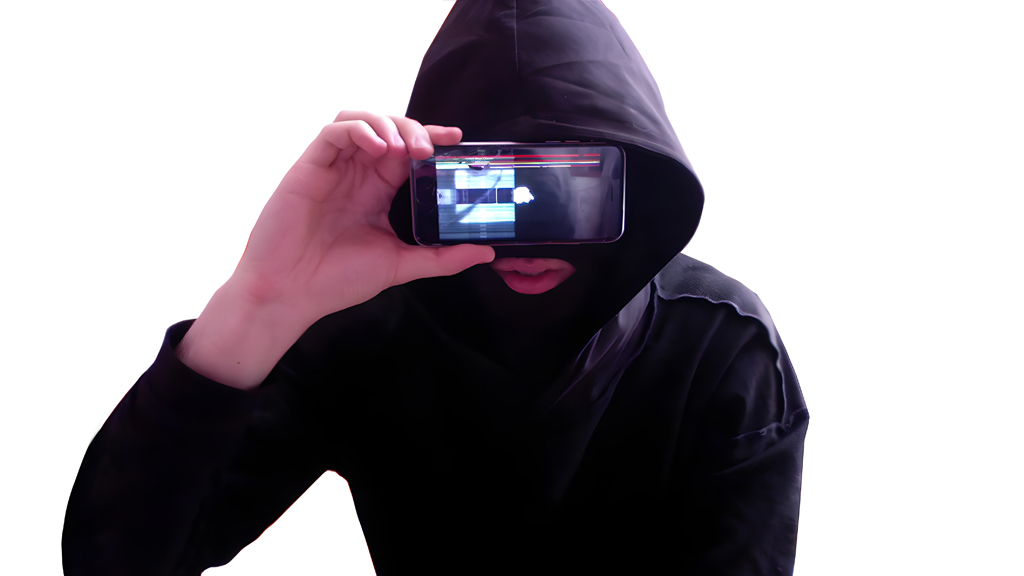
Kirill Rave (2013)
Observing your career, what kind of reverse points do you remember the most? What has influenced your choice of artistic practice?
At the beginning of my journey I messed up a lot of my works while learning to paint on paper or canvas, and I always wanted to know what would happen if I continued experimenting with the techniques, where was the point at which the work could be considered finished. I needed a different tool of some kind, and it almost appeared before me on its own with a gradual realization of it.
Digital technology is the only way to create not just one work, but whole branches of different variations. You can always go back half an hour, I have a personal time machine in my hands, isn’t that wonderful?!
I’m not creating an image, video or sculpture, I’m creating a digital ghost that can move from one state to another. Sometimes the work exists in several forms, sometimes it is a hybrid, like a physical object with augmented reality. This way I don’t limit myself at all — multidisciplinarity suits me fine.

Kirill Rave – “Red Head”. Zaryadie Park: Media Center (2020)
In the exhibition press releases and articles you mentioned several times that your architectural vision helps a lot to see deep into the idea you are working with. What kind of skills do help you to realize your projects?
Designing the objects and the entire exposition allows me to imagine the result more precisely in advance, even if I am in another country and have never been to the gallery.
Architecture is always a scenario of human movement in space, and the creation of an exposition is also the materialization of a scenario. It can be conventional, like paintings hanging on the walls — you enter, you see, you come closer, or it can be complicated, creating a spatial composition — you enter, see a fragment, find a unique perspective, see your own image. I am closer to the second approach and try to use all the tools available. Architectural education gives you the opportunity to design up to the nail and in advance — this allows you to achieve high quality and efficiency of all processes. I sometimes use complications that arise in spite of the whole process as a tool, such as the glitch when playing video on the screen. This element, born right in front of my eyes at an exhibition, is very precious. One of the first cases was the parallel program of the Moscow Biennale in 2017, when the screens with glitch avatars started flickering and displaying the error message — I really liked it, I got inspired and continued to experiment inside the exhibition — thus the Broken Composers project for audiovisual experiments was born.
- Cosmoscow art fair special project: “Phygital is new digital” exhibition. Gostiniy Dvor (2022)
- Kirill Rave. Process (2022)
Several artworks you completed and exhibited are very different in terms of materials used and locations you placed them. Could you tell more about the most impressive exhibitions you have had recently?
This year has been rich in miracles in many different senses of the word. An exhibition “Digital Ruins” has just opened in the Artocratia metauniverse together with VS gallery, and before that my media works got into the space of an architectural landmark, a wooden hut in the city of Suzdal — the “Larets” gallery curated by Andrey Bartenev, with the help of VS gallery. One video was tokenized and became part of the NFT section of the Chuvash Biennale thanks to 1art Channel. The exhibition at the Darwin Museum integrated into the human evolution exposition is closing soon.
I’ll focus in more detail on a special exhibition project of the Cosmoscow Art Fair together with the Instigators team, supported by Generative gallery — “Phygital is the new digital” curated by Andrey Misiano. This project not only builds a bridge between real objects and virtual ones, but also illustrates very vividly how one turns into the other. Each artist’s exhibit consisted of 3 parts: a physical object, next to a video of that object in a media environment, and a link to an NFT platform with the object already in blockchain. Andrei chose my work on the theme of anthropology in a digital environment, which is growing with new glitch artifacts and riddles, and I am grateful to him for that.

Broken Composers – Intervals festival: AV solo live. The new stage of the Alexandrinskiy Teater (2022)
What is the process or preparation period before you realise your work?
First there is a cloud of images to be fleshed out in my head, then I proceed to sketches, they can be written down in text form, as sketches through smartphone apps or (very rarely) I draw by hand, then with the computer this sketch is transformed into something. It can be a 2D or 3D object, real or virtual, static or dynamic. Sometimes one work is born out of another, sometimes the processes go in parallel or meet each other — very often it is difficult to predict.
You have several projects where you were interacting with music and anthropology — do you think that mixed media artworks might seem even more complex and attracting to the audience? Could you tell a little bit more about your recent work with Darwin Museum?
I have no doubt that mixed media is the most interesting format for artists and viewers, and I don’t really understand why there is any need to limit yourself. The only question remaining is the appropriateness of the use of technology.
I like it when a viewer chooses the depth of his or her immersion into an exposition; for me, the ideal art is the one that delights at every level of perception. The order of immersion is roughly as follows:
➤ The visual image of the physical work or works;
➤ Concept of the idea;
➤ Author’s technique of performance and presentation — music, smell, partial tangibility, etc;
➤ Additional interactive features — AR;
➤ Transition to a completely virtual environment — VR.
The viewer can stay at the top level — there is nothing wrong with that, or he can go down to the bottom. The possibility of such an immersion is priceless to me!
There is currently an exhibition with my participation at the Darwin Museum entitled “The Paradoxes of Evolution”. For me, the most important paradox remains the man himself in a balanced ecosystem. It is he who, through destruction, search for truth and experimental creation, creates a different quality of life — whether this is good or bad influence, no one can say for sure. There is no single answer about the origin of man on Earth either, so I decided that with the new possibilities of metauniverses we can put aside the search for truth and justice and create worlds according to what we want to believe — the origin of man from outer space, Darwin’s theory, from God, and from fish. These are the most popular theories at the moment. The skull sculptures help us feel the interconnectedness of art, science and religion. My works are under glass in a display case, inside an exhibit about human evolution, along with skulls of ancient people, additionally one skull is in augmented reality. Another work can be seen from the street on the building facade, where flowers grow on a rotating skull — a paradox within a paradox, since flowers are very difficult to fit into the theory of evolution.
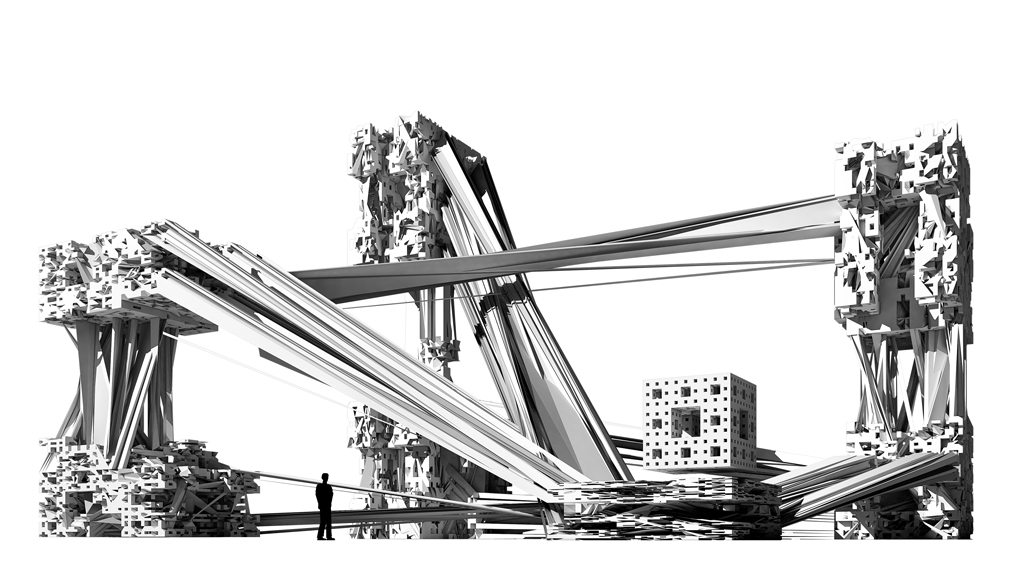
Kirill Rave – “Ruin_001”. Artoctatia metaverse (2022)
Could you tell us some secret story of the working process which you are proud of or still surprised by?
To me, any independent transportation of art between countries seems like an excerpt from adventurer and spy movies. I even did suitcase-sized works once. I have transported a lot of things, laser equipment, a lot of wires, etc., but the most unusual thing was probably a suitcase full of red rope. At the border I had to open it and explain why I needed it. At one point I myself started to think I was lying, but eventually they let me go.
All contemporary art is a very convenient format for manipulation, including its transportation, it has long been an alternative currency and Damien Hirst is very successful at it. It’s amazing that you can also smuggle expensive things as junk.
What are your plans for the next year? And do you feel you have achieved all you dreamt about by today? Do you have some projects on your mind to realize?
All my successes are very relative, and there is always something to strive for. I managed to participate in Biennales in Germany (Anhydrite 2019), Spain (the Wrong 2019), Moscow (in a parallel program at the Kultproekt Gallery in 2017) and Chuvashia (in 2022). Many fairs around the world, festivals including Ars Electronica, CADAF, etc. The experimental project Broken Composers unexpectedly led me to the New Stage of the Alexandrinsky theater, so I still don’t know what interesting sides of art I will explore, and that’s great! My level is improving, and I am slowly starting to have exhibitions in museums.
Right now I’m inspired by the possibilities of the metauniverses and I intend to work with tools that are new to me: creating physics in the scene, developing time loops and being able to scale in space. It sounds like a challenge for myself! I really like the fact that I don’t have to be bored and nostalgic, I just want to look forward. In parallel with the development of metauniverses, I am creating a new project with an artist I have never seen in reality, with Wilgeny Melnikov, we are using a smartphone together to scan the forest after the storm and create a digital impression of a place I have never been in, erasing the distance and very soon moving a large piece of forest to the space of an urban gallery, where we will show the result of the interaction between nature, digital technology, social media and two enthusiasts.
Photo on cover: Kirill Rave
Read more:
Kir Simakov, a photographer: “Truthful portraits are always fascinating”
Interview: Helen Rappаport tells about the Romanovs
Pretense and intrigue: a new play “Dmitry” in Marylebone Theatre
SUBSCRIBE
Receive our digest once a week with quality Russian events and articles




